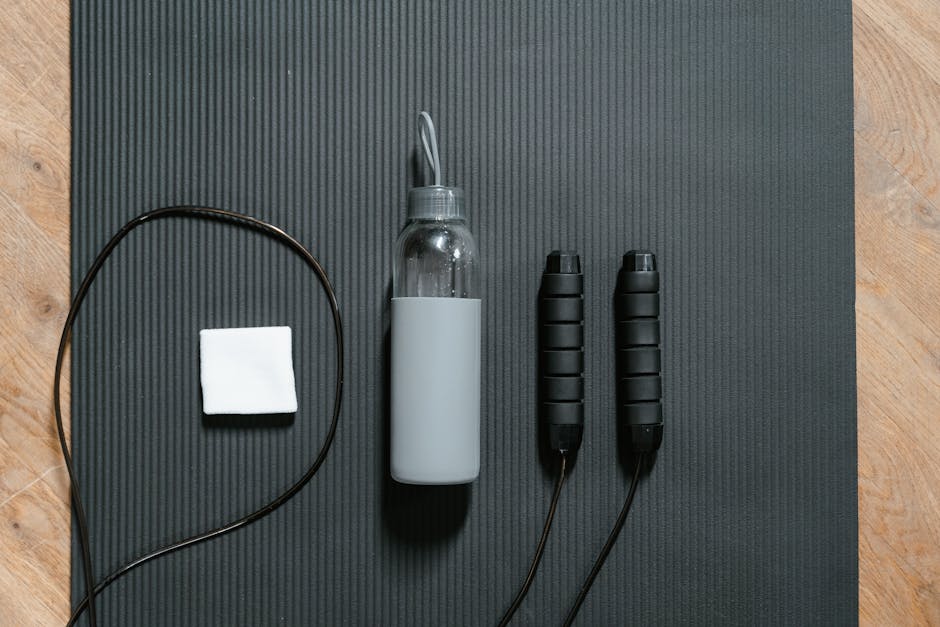Tired of fad diets and unrealistic fitness goals that leave you feeling frustrated and defeated? You’re not alone! Many people struggle with achieving sustainable weight loss, often falling prey to quick fixes that ultimately fail.
But what if I told you that lasting weight management isn’t about extreme measures, but rather about implementing simple, effective strategies that integrate seamlessly into your life? This article is your guide to shedding those extra pounds healthily and sustainably, focusing on building long-term habits for lasting results.
Achieving a healthy weight is crucial for more than just aesthetics; it’s a cornerstone of overall wellness. Carrying excess body fat increases your risk of developing serious health problems like type 2 diabetes, heart disease, and certain cancers. By focusing on sustainable weight loss through a combination of balanced nutrition, regular exercise, and mindful lifestyle choices, you’ll not only improve your physical appearance but also significantly reduce your risk of these debilitating conditions.
You’ll experience boosted energy levels, improved sleep quality, and enhanced self-esteem – all vital components of a fulfilling life. One common misconception is that rapid weight loss is ideal; however, slow and steady progress, prioritizing healthy habits, leads to more sustainable results and minimizes the risk of muscle loss.
In this article, we’ll debunk common weight-loss myths and equip you with practical, evidence-based strategies. We’ll explore the importance of creating a calorie deficit through a balanced diet emphasizing whole foods, including tips for managing portion sizes and making smart food choices. We’ll then delve into the crucial role of regular exercise, focusing on both cardiovascular training (like running or swimming) and strength training (which is vital for boosting your metabolism and building lean muscle mass).
Finally, we’ll discuss the often-overlooked aspects of sleep, stress management, and mindful eating to optimize your weight-loss journey. Get ready to transform your body and your life with these simple, yet powerful, strategies!
Fuel Your Body Right

Sustainable weight loss isn’t about drastic measures; it’s about building healthy habits that nourish your body and fuel your goals. This means focusing on the quality of your food choices, not just restricting calories. Think of your body as a high-performance machine – it needs the right fuel to operate efficiently and reach its peak performance.
Poor fuel leads to sluggishness, breakdowns, and ultimately, hinders your progress.
Prioritize whole, unprocessed foods. This includes plenty of fruits, vegetables, lean proteins (think chicken breast, fish, beans, lentils), and whole grains. These foods are packed with essential nutrients, fiber, and vitamins that keep you feeling full and satisfied, reducing cravings and preventing overeating.
A diet rich in fiber also promotes healthy digestion and gut bacteria, further supporting weight management. Research consistently shows a strong correlation between high fiber intake and successful weight loss.
Control your portions. Even healthy foods can contribute to weight gain if consumed in excess. Be mindful of your serving sizes, using measuring cups and food scales initially to help you understand appropriate portions.
Visual cues can also be helpful; for example, using a smaller plate can make a standard portion appear larger.
Hydration is crucial. Water plays a vital role in numerous bodily functions, including metabolism and appetite regulation. Often, thirst is mistaken for hunger, leading to unnecessary snacking.
Aim for at least eight glasses of water throughout the day. You can increase your water intake by carrying a reusable water bottle and sipping on it consistently.
Incorporate regular exercise. While diet plays a significant role in weight loss, exercise is equally important for overall health and for boosting your metabolism. Aim for a combination of cardio and strength training.
Cardio, such as brisk walking, jogging, swimming, or cycling, helps burn calories and improve cardiovascular health. Strength training, using weights or resistance bands, builds muscle mass, which increases your metabolism, even at rest. This means you burn more calories even when you’re not actively exercising.
A sample strength training routine could include: Squats (3 sets of 10-12 reps), Push-ups (3 sets of as many reps as possible), Rows (3 sets of 10-12 reps), Lunges (3 sets of 10-12 reps per leg). Remember proper form is crucial to prevent injuries. For squats, maintain a neutral spine and engage your core.
For push-ups, ensure your body forms a straight line from head to heels. For rows, keep your back straight and pull the weight towards your chest. For lunges, step forward with one leg, bending both knees to 90 degrees.
One common challenge is the feeling of being deprived when making dietary changes. To overcome this, focus on adding healthy foods to your diet rather than restricting yourself. Gradually incorporate more fruits and vegetables into your meals, and replace processed snacks with healthier alternatives, like nuts or Greek yogurt.
Another hurdle is maintaining motivation. Set realistic goals, celebrate small victories, and don’t get discouraged by occasional setbacks. Remember that progress is not always linear.
Find an exercise buddy for accountability and support, or track your progress using a fitness app to stay motivated.
Finally, listen to your body. Pay attention to your hunger and fullness cues. Don’t ignore your body’s signals; eat when you’re hungry and stop when you’re comfortably satisfied, not stuffed.
Consistent effort, combined with patience and self-compassion, will pave your way towards achieving your weight loss goals.
5 Essential Workout Moves

Sustainable weight loss isn’t about drastic measures; it’s about building healthy habits. And a crucial part of that is incorporating effective exercise into your routine. You don’t need a fancy gym membership or complicated equipment; these five moves are the foundation of a strong, weight-loss-friendly workout, perfect for beginners and experienced exercisers alike.
1. Squats: This compound exercise works multiple muscle groups simultaneously, boosting metabolism and calorie burn. Stand with feet shoulder-width apart, toes slightly outward.
Lower your hips as if sitting in a chair, keeping your back straight and chest up. Ensure your knees don’t go past your toes. Push through your heels to return to standing.
Aim for 3 sets of 10-12 repetitions. Proper form is key here to prevent knee injuries. If you’re struggling with balance, hold onto a sturdy chair for support.
2. Push-ups: A classic for a reason! Push-ups are fantastic for building upper body strength and engaging your core.
Start in a plank position, hands slightly wider than shoulder-width apart. Lower your chest towards the floor, bending your elbows. Push back up, keeping your body in a straight line.
If standard push-ups are too challenging, modify by performing them on your knees. Aim for 3 sets of as many repetitions as possible (AMRAP), gradually increasing your count over time. Think of your body as a lever; the stronger your core, the easier it becomes to lift the rest of your body.
3. Lunges: Lunges target your legs and glutes, improving lower body strength and balance. Step forward with one leg, bending both knees to 90 degrees.
Ensure your front knee doesn’t extend past your toes. Push off with your front foot to return to the starting position. Alternate legs.
Perform 3 sets of 10-12 repetitions per leg. Remember to maintain a strong core throughout the movement for stability.
4. Plank: This isometric exercise strengthens your core, which is crucial for overall body strength and posture improvement. Begin in a push-up position, but rest on your forearms instead of your hands.
Keep your body in a straight line from head to heels, engaging your abdominal muscles. Hold for 30 seconds, building up to 60 seconds or longer over time. Three sets are recommended.
A strong core is like the foundation of a house; it supports everything else.
5. Walking: Often overlooked, walking is a fantastic cardiovascular exercise. Aim for at least 30 minutes of brisk walking most days of the week.
This increases your heart rate and burns calories, contributing significantly to weight loss. Walking is also a low-impact exercise, making it suitable for people of all fitness levels. Listen to your body; if you’re feeling fatigued, take breaks, or reduce the intensity, before returning to your exercise session.
Addressing Challenges: Lack of motivation is a common hurdle. Try setting realistic goals, starting small, and finding a workout buddy for support and accountability. Muscle soreness is normal, but rest and proper hydration are vital for recovery.
Listen to your body and don’t push yourself too hard, especially when starting. Remember, consistency is key—even small changes can lead to significant results over time. Celebrate your progress to stay motivated and remind yourself of how far you’ve come.
Nutrition Tip: Combining these workouts with a balanced diet rich in fruits, vegetables, lean protein, and whole grains will significantly accelerate your weight loss journey. Remember, exercise and nutrition work synergistically to achieve optimal results. A healthy weight loss journey is a marathon, not a sprint!
Avoid These Weight Loss Traps

Sustainable weight loss isn’t about drastic measures; it’s about building healthy habits that you can maintain for life. Many people fall into common traps that sabotage their efforts. Understanding and avoiding these pitfalls is crucial for long-term success.
One significant trap is the “all-or-nothing” mentality. Missing a workout or indulging in a less-than-ideal meal shouldn’t derail your entire plan. Weight loss is a marathon, not a sprint.
If you slip up, simply get back on track with your next meal or workout. Don’t let perfection be the enemy of progress. Think of your fitness journey as building a strong house – you don’t want a single crack in the foundation to bring it down.
Another common mistake is focusing solely on the scale. Weight fluctuations are normal, influenced by factors like water retention and glycogen levels. Instead of solely relying on the scale, track your body composition through measurements, body fat percentage (if possible), or how your clothes fit.
These indicators offer a more holistic view of your progress.
Many individuals also underestimate the power of strength training. While cardio is vital for cardiovascular health, strength training boosts metabolism, builds lean muscle mass, and improves body composition. Include strength training exercises at least two to three times a week.
Aim for a balance of compound exercises (working multiple muscle groups simultaneously) and isolation exercises (targeting specific muscles). For example, include squats (3 sets of 8-12 reps), push-ups (3 sets of as many reps as possible), and rows (3 sets of 8-12 reps). Remember to maintain proper form to prevent injuries; if unsure, consult a fitness professional.
Proper form for squats involves keeping your back straight, chest up, and weight in your heels. For push-ups, maintain a straight line from head to heels, engaging your core. Rows should involve pulling the weight towards your chest, squeezing your shoulder blades together.
Nutrition plays a crucial role. Avoid crash diets that promise rapid weight loss but are often unsustainable and unhealthy. Focus on incorporating nutrient-dense foods such as fruits, vegetables, lean protein, and whole grains into your diet.
Prioritize whole, unprocessed foods over processed, sugary, and high-fat options. Don’t be afraid to track your calorie intake initially to understand your baseline, but the goal is to build healthy eating habits that you can sustain long-term.
Finally, consistency is paramount. Even small, incremental changes made consistently over time yield significant results. Start with small, achievable goals, like adding a 30-minute walk to your daily routine or swapping sugary drinks for water.
Gradually increase the intensity and duration of your workouts as you progress. Celebrate your achievements along the way to stay motivated.
One of the biggest challenges is maintaining motivation. This is why setting realistic, achievable goals and finding an activity you enjoy are crucial. Consider joining a fitness class or finding a workout buddy for support and accountability.
If you find yourself struggling, don’t hesitate to seek guidance from a registered dietitian or certified personal trainer.
Smart Progression: Level Up

Congratulations! You’ve established a solid foundation for healthy weight loss. Now it’s time to level up your fitness game.
This isn’t about drastic changes; it’s about smart progression—gradually increasing the challenge to continue seeing results and prevent plateaus. Think of your fitness journey as climbing a mountain: steady, consistent progress is key to reaching the summit.
One crucial aspect of leveling up is increasing the intensity and volume of your workouts. This doesn’t mean suddenly doubling your workout duration. Instead, focus on progressive overload—gradually increasing the weight, resistance, or repetitions you perform over time.
For example, if you’re currently doing 10 squats with good form, aim to increase that to 12 next week, then 15 the week after. This constant challenge is essential for stimulating muscle growth and boosting your metabolism.
Let’s look at a sample workout routine you can incorporate:
- Monday: Strength Training (Focus on compound movements like squats, lunges, push-ups, rows, and deadlifts. Aim for 3 sets of 8-12 repetitions for each exercise. Proper form is paramount to prevent injuries. For example, during squats, ensure your knees track over your toes and your back remains straight. For push-ups, maintain a straight line from head to heels.)
- Tuesday: Cardio (30-45 minutes of moderate-intensity cardio like brisk walking, cycling, or swimming. Vary your cardio to prevent boredom and challenge different muscle groups.)
- Wednesday: Rest or Active Recovery (Light stretching, yoga, or a leisurely walk)
- Thursday: Strength Training (Focus on different muscle groups than Monday)
- Friday: Cardio (Similar to Tuesday)
- Weekend: Rest or Active Recovery
Remember, nutrition plays a crucial role. As you increase your workout intensity, ensure you’re fueling your body adequately. Prioritize lean protein sources (chicken, fish, beans, lentils), complex carbohydrates (whole grains, fruits, vegetables), and healthy fats (avocado, nuts, olive oil).
Research shows that consistent protein intake is vital for muscle repair and growth, supporting your weight loss efforts.
One common challenge at this stage is hitting a plateau. If you notice your weight loss slowing down, don’t get discouraged. This is a common occurrence.
To break through, consider incorporating high-intensity interval training (HIIT) into your routine. HIIT involves short bursts of intense exercise followed by brief recovery periods. Studies show HIIT to be very effective for fat burning and improving cardiovascular fitness.
You could also adjust your workout routine by changing exercises, increasing the weight, or adding more challenging variations.
Another challenge might be finding the motivation to stick to your routine. Try finding a workout buddy for accountability and support, or join a fitness class for added encouragement. Remember to celebrate small victories along the way.
Every step forward, no matter how small, is progress towards your goal. Keep pushing yourself, but listen to your body and rest when needed. Consistent effort and a smart approach are what will lead to sustainable weight loss and improved fitness.
Mindset: Conquer Your Goals

Sustainable weight loss isn’t just about crunches and kale smoothies; it’s a mental marathon, not a sprint. Your mindset is the invisible engine driving your success. Before you even consider a single rep, you need to cultivate a positive and realistic approach.
This means shifting from a mentality of deprivation to one of empowerment.
One powerful technique is reframing your relationship with food. Instead of viewing certain foods as “forbidden,” focus on building a balanced diet rich in whole, unprocessed foods. Think of your meals as fuel for your body, energizing you for workouts and everyday life.
This shift in perspective prevents the feelings of restriction that often lead to binge eating.
Set realistic, achievable goals. Instead of aiming for a drastic 10-pound weight loss in a week (which is generally unhealthy and unsustainable), set smaller, more manageable goals, like losing 1-2 pounds per week. Celebrate these smaller victories; they build momentum and reinforce positive behavior.
Think of it like climbing a mountain – you wouldn’t try to summit Everest in a day. You break it down into smaller, manageable climbs.
Find an exercise you genuinely enjoy. Don’t force yourself into activities you hate. Research shows that enjoyment is a crucial factor in exercise adherence.
If you dread the gym, try hiking, dancing, swimming, or cycling. The key is to find something that keeps you motivated and engaged.
Here’s a sample workout routine you can incorporate immediately: Three days a week, perform 3 sets of 10-12 repetitions each of the following exercises: squats (ensuring your knees track over your toes and your back stays straight), push-ups (modified on your knees if needed), and rows (using resistance bands or dumbbells, maintaining a straight back and engaging your core). Remember to focus on proper form to prevent injuries and maximize results. Always start with a warm-up (5-10 minutes of light cardio and dynamic stretches) and end with a cool-down (stretching major muscle groups).
Nutrition plays a vital role. Prioritize lean protein sources (chicken, fish, beans), complex carbohydrates (whole grains, fruits, vegetables), and healthy fats (avocado, nuts, olive oil). Remember that portion control is key.
Aim for roughly 30-40% of your daily calories from carbohydrates, 20-30% from fat, and 30-40% from protein. Consult a registered dietitian or nutritionist for personalized guidance.
Expect setbacks. They are inevitable. Don’t let a missed workout or a less-than-perfect meal derail your entire progress.
View these as temporary deviations, learn from them, and get right back on track. Remember that consistency, not perfection, is the key to long-term weight management.
Finally, cultivate a supportive network. Share your goals with friends and family, or join a fitness community for encouragement and accountability. Having people who believe in you makes the journey much easier and more enjoyable.
Minimalist Home Gym Setup

Sustainable weight loss isn’t about drastic measures; it’s about building consistent, healthy habits. And you don’t need a fancy gym membership to achieve your goals. A minimalist home gym, equipped with just a few key pieces of equipment, can be incredibly effective.
Consider investing in resistance bands. These versatile tools provide resistance for a wide range of exercises, mimicking the effects of weights without the bulk. They’re portable, affordable, and perfect for building strength and endurance.
Always ensure the band is securely anchored and avoid stretching it beyond its elastic limit to prevent snapping.
A jump rope is another fantastic addition. Jumping rope is a highly effective cardiovascular exercise that burns calories rapidly. Aim for three to five minutes of high-intensity intervals, interspersed with short rest periods.
Remember proper form: keep your core engaged, land softly on the balls of your feet, and avoid over-rotating your arms.
Finally, a yoga mat provides a comfortable surface for bodyweight exercises. Bodyweight training, incorporating exercises like squats, push-ups, lunges, and planks, is incredibly effective for building muscle and boosting metabolism. Focus on maintaining correct form; for instance, during squats, ensure your knees don’t extend beyond your toes to protect your joints.
With push-ups, keep your body in a straight line from head to heels.
Sample Workout Routine (3 days a week, with rest days in between):
- Day 1: Lower Body: 3 sets of 10-12 reps of resistance band squats, 3 sets of 10-12 reps of resistance band lunges (each leg), 3 sets of 30-second plank holds.
- Day 2: Upper Body: 3 sets of 10-12 reps of resistance band rows, 3 sets of 10-12 reps of resistance band chest presses, 3 sets of as many push-ups as possible (AMRAP).
- Day 3: Cardio & Core: 10 minutes of jump rope (interval training), 3 sets of 15-20 reps of crunches, 3 sets of 15-20 reps of bicycle crunches, 3 sets of 30-second side plank holds (each side).
Remember, consistency is key. Think of building fitness like building a house – brick by brick. Small, consistent efforts compound over time to yield significant results.
Don’t get discouraged if you miss a day or two; simply get back on track with your routine.
Nutrition plays a crucial role. Focus on incorporating lean protein sources, whole grains, fruits, and vegetables into your diet. Prioritize adequate hydration by drinking plenty of water throughout the day.
Small, sustainable dietary changes are more effective in the long run than drastic, unsustainable restrictions.
Addressing Challenges: Lack of motivation is common. Find a workout buddy for accountability or set realistic, achievable goals. Feeling overwhelmed?
Break your workouts into smaller chunks; even 15 minutes of exercise is better than nothing. Remember, weight loss is a journey, not a race. Be patient and celebrate your progress along the way.
Conclusion
In conclusion, achieving healthy weight loss is a holistic journey encompassing mindful nutrition, targeted exercise, and a positive mindset. Fueling your body with nutritious, whole foods, as discussed in the “Fuel Your Body Right” section, provides the essential energy for workouts and overall well-being. The five essential workout moves detailed in the article provide a foundation for building strength and improving cardiovascular health.
Avoiding common weight loss pitfalls, as highlighted in “Avoid These Weight Loss Traps”, helps maintain consistency and prevents setbacks. “Smart Progression: Level Up” guides you to gradually increase intensity and challenge your body safely, ensuring continued progress. A positive mindset, as emphasized in “Mindset: Conquer Your Goals”, is crucial for overcoming obstacles and staying motivated.
Finally, a simple home gym setup, as outlined in “Minimalist Home Gym Setup”, removes any barriers to starting your fitness journey.
Implementing these strategies will not only contribute to achieving your weight loss goals but will also positively impact your energy levels, sleep, mood, and overall health, leading to a stronger, healthier physique. Don’t wait another day – start your fitness journey today! Choose one small step from this article and commit to it.
Remember, consistency and patience are key. Results may vary from person to person, and it’s always wise to consult with healthcare professionals before starting any new diet or exercise program. You have the power within you to achieve your fitness goals.
Believe in yourself, stay committed, and celebrate your progress along the way.
